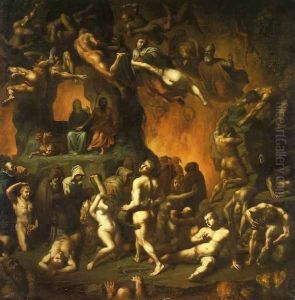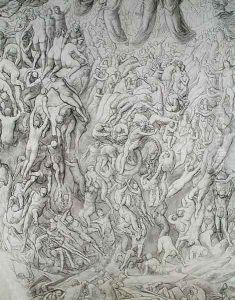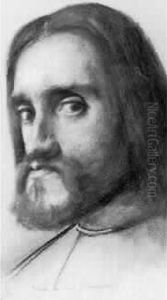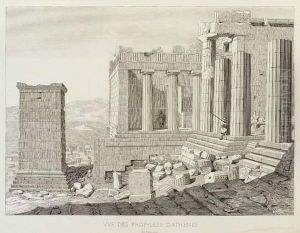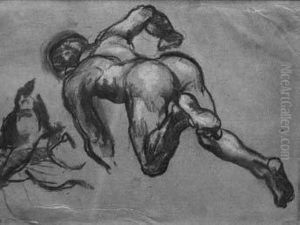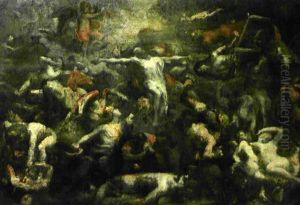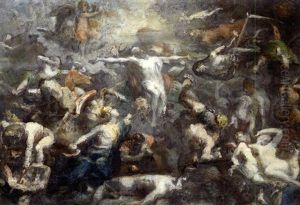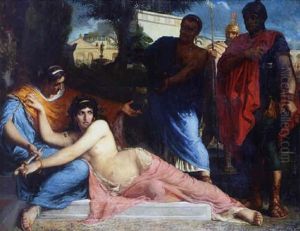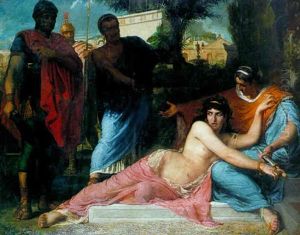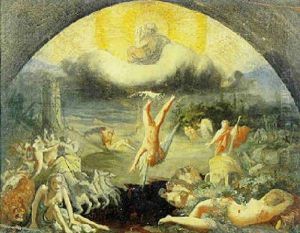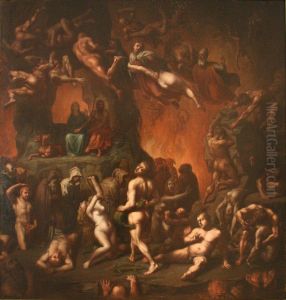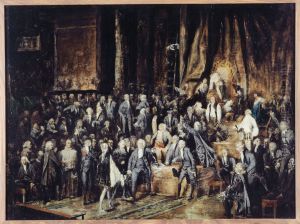Paul Chenavard Paintings
Paul Chenavard was a French painter and intellectual, born on December 9, 1807, in Lyon, France. His work and career spanned much of the 19th century, a period marked by dramatic changes in art, politics, and society in France and across Europe. Chenavard's artistic journey was deeply intertwined with the intellectual and political currents of his time, making him a unique figure among his contemporaries.
Chenavard began his artistic education in Lyon before moving to Paris to further his studies. He was initially influenced by the Romantic movement, which was predominant at the beginning of his career. However, his style and interests evolved over time, and he became known for his philosophical and symbolic approach to art. Chenavard's work often reflected his deep interest in history, mythology, and religion, themes that were infused with his own philosophical inquiries and skepticism towards organized religion.
In the 1840s, Chenavard became associated with a group of artists and intellectuals who sought to integrate art, philosophy, and politics. This period was marked by revolutionary upheavals across Europe, and Chenavard's work was deeply influenced by the social and political turmoil of his time. He envisioned monumental projects that were meant to embody the spirit of the age, including a proposed series of murals for the Panthéon in Paris, which were ultimately never realized. These ambitious projects reflected Chenavard's belief in the transformative power of art and its potential to convey universal truths and foster societal progress.
Despite his ambitious visions, Chenavard's work received mixed reactions from the public and critics alike. His philosophical and often somber approach to painting was at odds with the prevailing tastes of the time, which favored the more decorative and lighthearted styles of the Second Empire and later the Impressionist movement. As a result, Chenavard never achieved the level of fame and recognition that some of his contemporaries did.
Paul Chenavard passed away on February 28, 1895, in Paris. While he may not have enjoyed widespread acclaim during his lifetime, his work has been reassessed in recent years, with art historians recognizing his contributions to 19th-century French art. His paintings, though few in number, are seen as early expressions of Symbolist ideas, anticipating the movement that would gain prominence towards the end of the century. Chenavard remains a fascinating figure for his attempt to merge art with philosophical and political thought, offering a unique window into the intellectual and cultural landscape of 19th-century France.
